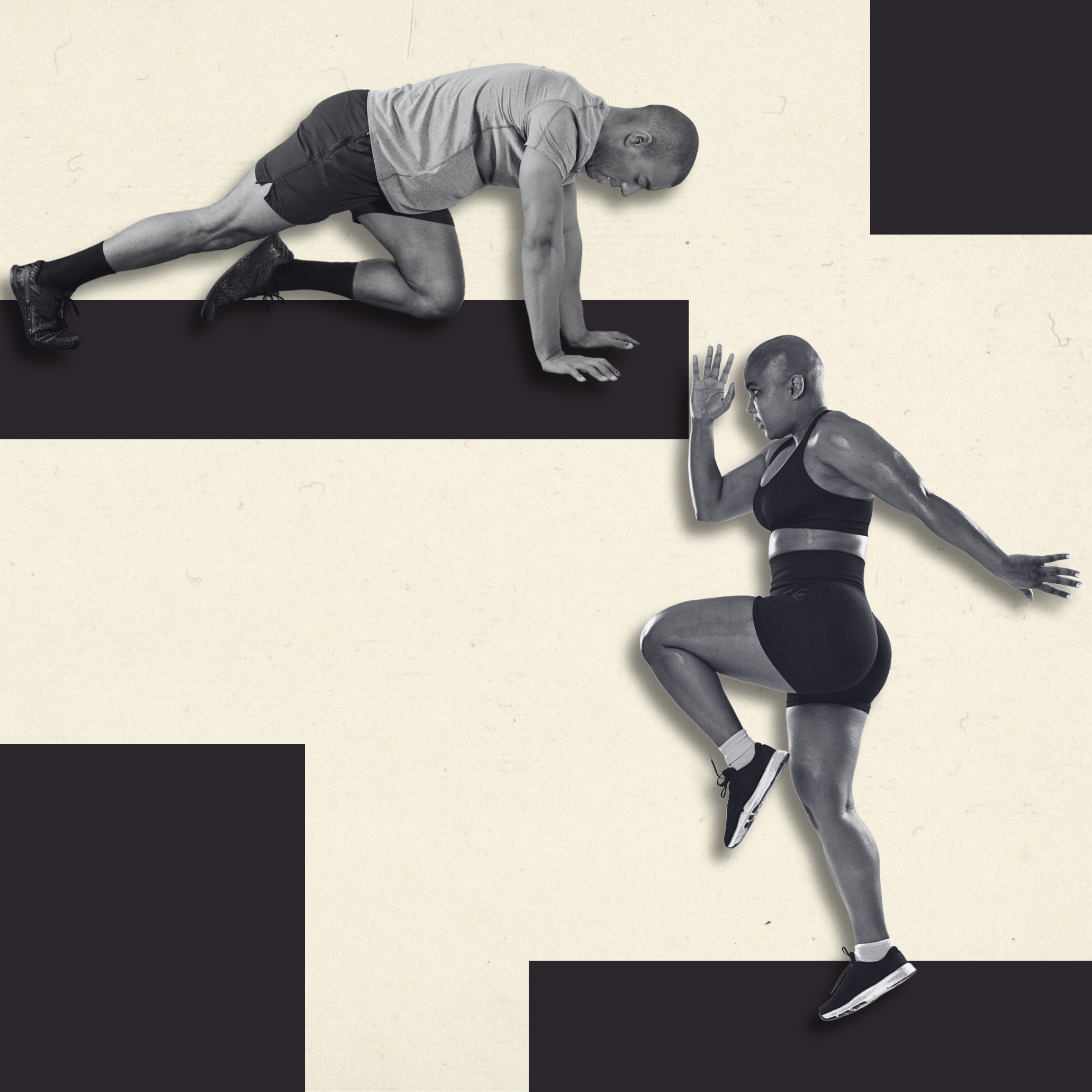When it comes to your hip flexors, you’re likely focused on stretching them. However, with this critical muscle group, there’s a key element you’re probably neglecting: strength-building. Hip flexor strengthening exercises can help improve your athletic performance, as well as make daily activities, such as walking uphill or climbing stairs, easier.
As a certified personal trainer, I’ll explain why focusing on your hip flexors is essential and provide a range of exercises to help you build functional leg strength.
What Are the Hip Flexors?
The hip flexors are a group of muscles located at the front of your hip and pelvis that help flex the leg. Hip flexion is the motion that occurs when you elevate your knee closer to your chest, moving it into a bent position.
The primary muscles in your hip flexors are the psoas major and the iliacus. Together, these muscles are referred to as the iliopsoas. Other important muscles in this group include the rectus femoris (one of your quad muscles), the sartorius, and the pectineus.
How Hip Flexor Exercises Improve Lower Body Strength
Hip flexor strengthening exercises are crucial for avoiding unwanted discomfort and injury. If you have weak hip flexors, you may experience back, hip, and knee pain, as well as poor efficiency when running.
A lack of hip flexor strength can also cause alignment issues in your hips and knees, increasing the risk of certain injuries such as herniated disks, pinched nerves, and strained quads.
9 Hip Flexor Exercises
Depending on your fitness level and how strong your hip flexors are, you may want to start with exercises that require only your body weight. As you build strength, progress to adding ankle weights or using resistance bands.
How Many Sets and Reps to Do
Begin with two sets of the following exercises. As you become stronger, add a third set or switch to a tighter resistance band. (FYI: Some of these exercises require a kettlebell or resistance bands.)
1. Straight Leg Raises
This exercise is a great option for beginners. Start practicing this movement using only your body weight. When you become familiar with the motion, you can add on a set of ankle weights.
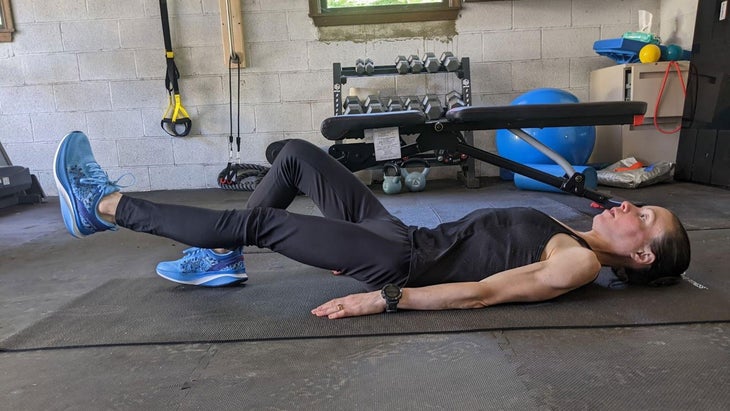
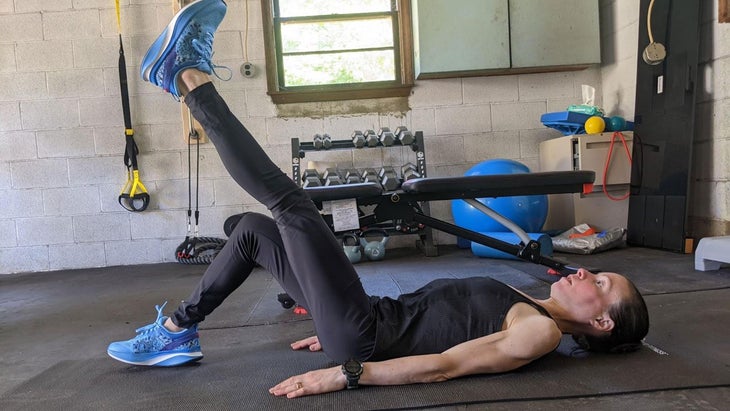
How to do it:
- Lie on your back.
- Bend one knee and place the foot of that leg flat on the floor. Extend your other leg straight up in front of you.
- Place your hands at your sides for support.
- Engaging your hip flexors, slowly lift the straightened leg up toward the ceiling. Maintain a straight knee and keep your toes pointed upward.
- Pause at the top of your range of motion. This position will depend on your hamstring flexibility. Even if you have a lot of mobility, you shouldn’t extend your leg past a 90-degree angle with the floor.
- Slowly lower your leg back down. Instead of allowing your heel to touch the ground, keep it slightly elevated. When your heel is hovering just above the floor, re-engage your hip flexors and lift the leg back up.
- Complete 15 to 20 reps before switching to the other side.
2. Standing Resisted Marches
This exercise requires a small loop resistance band or a booty band.
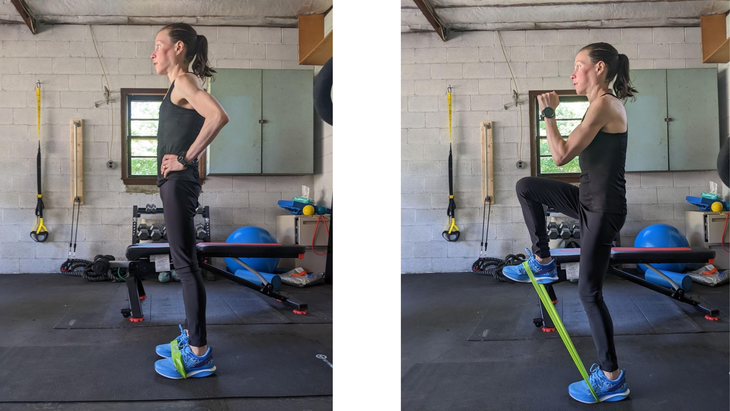
How to do it:
- Step both of your feet inside a small loop resistance band or booty band.
- Keep one foot firmly planted on the ground. Drive the knee of the other leg up toward your chest, pulling against the resistance of the exercise band. Make sure to maintain good posture. Do not lean to one side or round your back.
- Pause at the top position to work on the isometric strength of your hip flexors.
- Slowly lower the foot back down.
- Perform 15 reps before switching to the other leg.
3. Walking Lunges
A walking lunge (also known as a static split squat) builds strength throughout your hip flexors, as well as in the major muscles in your lower body, including your calves and quads. Depending on your hip mobility, you may also find that this exercise helps stretch your hip flexors.
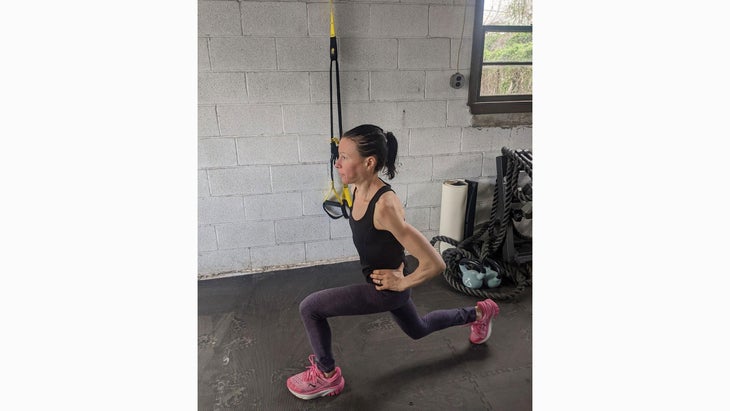
How to do it:
- Stand with good posture. Keep your chest up and your shoulders down. Place your hands on your hips.
- Take a large step forward. To find the right position, make sure that when you drop into a lunge, you’re able to bend your front and back knees 90 degrees. Your front knee should not shift beyond your toes.
- Bend both knees and sink into a deep lunge. Make sure your front shin is perpendicular to the floor, and your front thigh is parallel to the floor. Engage your core muscles to keep your torso upright and your back straight.
- Press through your front foot to stand up. Bring your back leg up and forward in front of your body, stepping through to the next lunge. When you lift the trailing leg, try to exaggerate the movement by imagining that you’re clearing a hurdle before planting the leg down. This motion will help strengthen your hip flexors and improve hip mobility.
- Repeat this movement, alternating your front leg as you progress forward.
- Complete 25 to 30 reps.
4. Sit-Ups
You may think of the sit-up as a classic ab-strengthening exercise, but that’s not all it is. Studies have shown that sit-ups activate the hip flexors as much as, if not more than, the abdominal muscles. So, if your goal is to strengthen your hip flexors, this exercise can be a helpful tool.
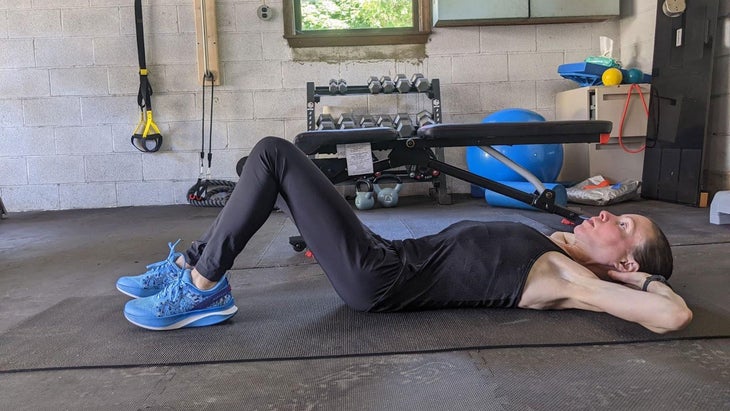
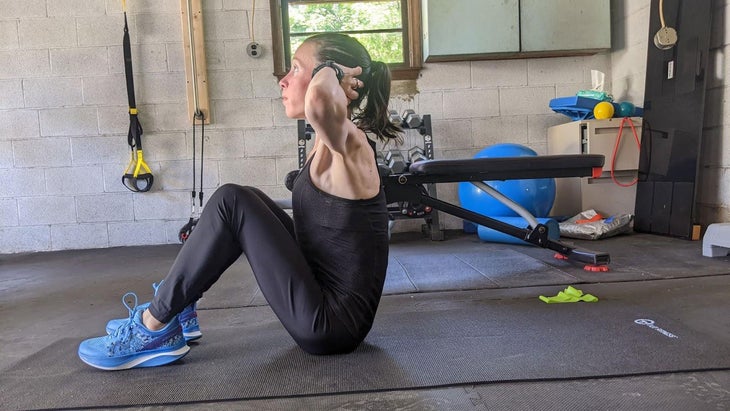
How to do it:
- Lie on your back. Bend your knees and keep your feet flat on the floor. Point your toes straight ahead. Gently cradle the back of your head with your hands. Be careful not to pull up on your neck with your arms.
- Engage your abs and hip flexors to lift your shoulder blades and torso off the floor. Stop when you are sitting with your trunk perpendicular to the floor. Focus on using your muscles instead of propelling your body up with momentum.
- Slowly lower your torso back to the starting position.
- Complete 15 to 20 controlled reps.
5. Resisted Hip Hikes
This resistance band exercise is one of the best ways to target your hip flexors. Over time, you can replace the current resistance band with one of greater tension. If you have trouble balancing, hold onto a wall or table for support.
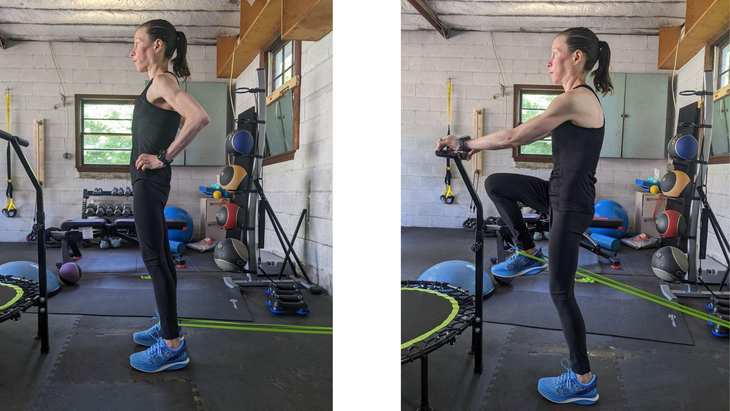
How to do it:
- Secure a resistance band with a long loop around a low anchor point. Place the other end of the band around the top of your shoe.
- Stand upright with good posture, facing away from the anchor point of the band. Make sure to stand far enough away to create tension in the band.
- Keeping your core and glutes tight, drive your knee up to your chest, squeezing your hip flexors. If your balance allows for it, move your arms in a reciprocal pattern, as if you are running. You can also opt to hold onto something, such as a wall, for support.
- Hold and squeeze at the top position for 2-3 seconds. Slowly lower your leg back down, resisting the pull of the band by contracting your hip flexors.
- Perform 10 to 15 reps before switching legs.
6. Mountain Climbers
This exercise offers an opportunity to integrate a burst of cardio into hip flexor movements. In addition to strengthening the hip flexors, mountain climbers also work your core muscles, shoulders, arms, and glutes.
To progress this movement, add sliding discs under your feet or practice it with socked feet on a hardwood floor. Adding in ankle weights will also increase the workload on your hip flexors and core muscles.
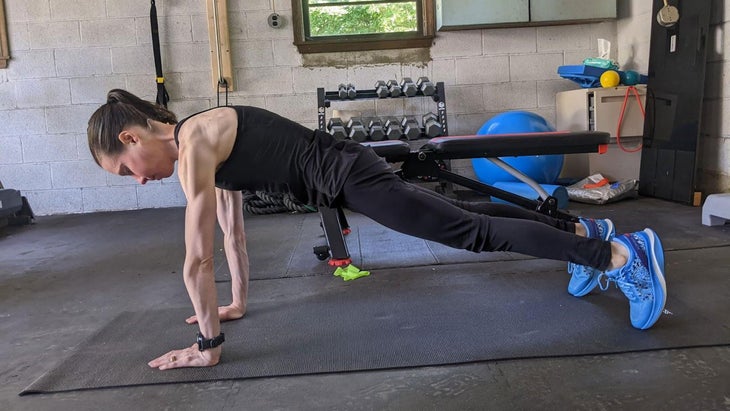
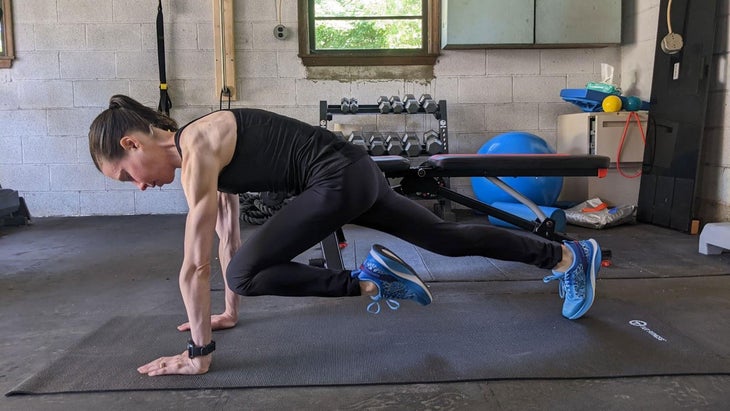
How to do it:
- Start in a push-up position. Your body should be in a straight line from the top of your head to your heels.
- Keeping your core and glutes tight, drive one knee up toward your chest. Return the leg back to its original position.
- Repeat this movement with the other leg. (Make sure to keep your upper body and core as still as possible, and your hips in line with your body.)
- Run as hard and fast as you can for 30 to 60 seconds.
7. Kettlebell Swings
The kettlebell swing is one of the most effective exercises for strengthening the hip flexors. This is a dynamic, full-body movement that engages your entire posterior chain (lower back muscles, glutes, hamstrings, and calves), as well as your hip flexors, abdominal muscles, chest, and shoulders.
To maximize the benefits of this movement, focus on snapping your hips forward as you swing the kettlebell up. The momentum should be coming from driving your hips, not from using your arms.
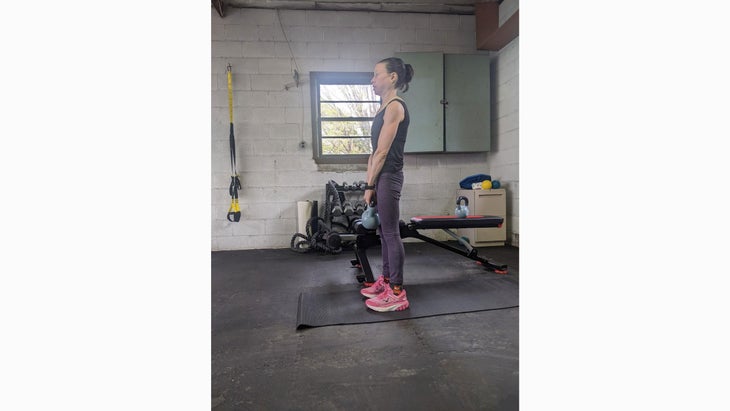
How to do it:
- Stand with your feet slightly wider than shoulder-width apart. Grip the kettlebell handle with both hands, ensuring that they are next to one another. Your arms should be fully extended so that the kettlebell is hanging down in front of your body.
- Keep your heels firmly planted on the floor. Allow for a gentle bend in your knees.
- Press through your heels. Snap your hips forward to drive the kettlebell upward until it’s roughly at chest height. Your arms should be fully extended in front of you.
- Use your glutes and hamstrings to control the kettlebell as it descends, allowing it to swing backwards through the space between your legs.
- At the end of the arc of the swing, pop your hips forward again. Explode through your hip flexors to drive the kettlebell back up to chest height.
- Complete 12 to 20 reps.
8. Tucks
In addition to strengthening your hip flexors, tucks also build your core strength.
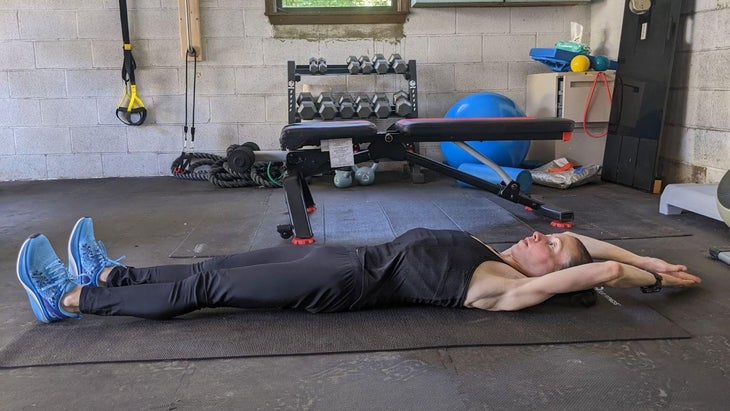
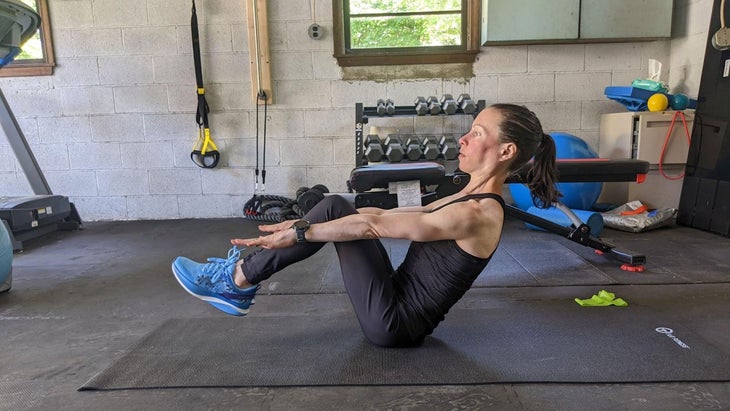
How to do it:
- Lie on your back. Extend your legs straight out in front of you and your arms over your head.
- Engage your abs and hip flexors. Lift your torso up with your back straight (almost like a sit-up) while drawing your legs into a bent position. Squeeze your hip flexors to draw your trunk and thighs toward one another.
- Pause at the top, engaging your entire core and hip flexors. Do not round your back.
- Slowly lower your torso to the ground while simultaneously straightening your legs back out. Make sure to maintain control by engaging your hip flexors and abs.
- Do not allow your feet or upper body to come to a full rest on the floor. Instead, hover just above the floor in the extended position. After pausing for a second, crunch back up into the tuck.
- Perform 10 to 15 reps.
9. High Knees (Sprinting in Place)
You may think of high knees as a warm-up exercise. However, this movement is also beneficial for building strength in your hip flexors and core. If you’re a beginner or have joint pain that makes running difficult, you can march in place. For an added challenge, use ankle weights.
How to do it:
- Run in place, exaggerating the knee drive by using your hips and core to lift your leg up as high as possible.
- Use your arms to help drive your knees up toward your chest.
Want more of Outside‘s health stories? Sign up for the Bodywork newsletter.


